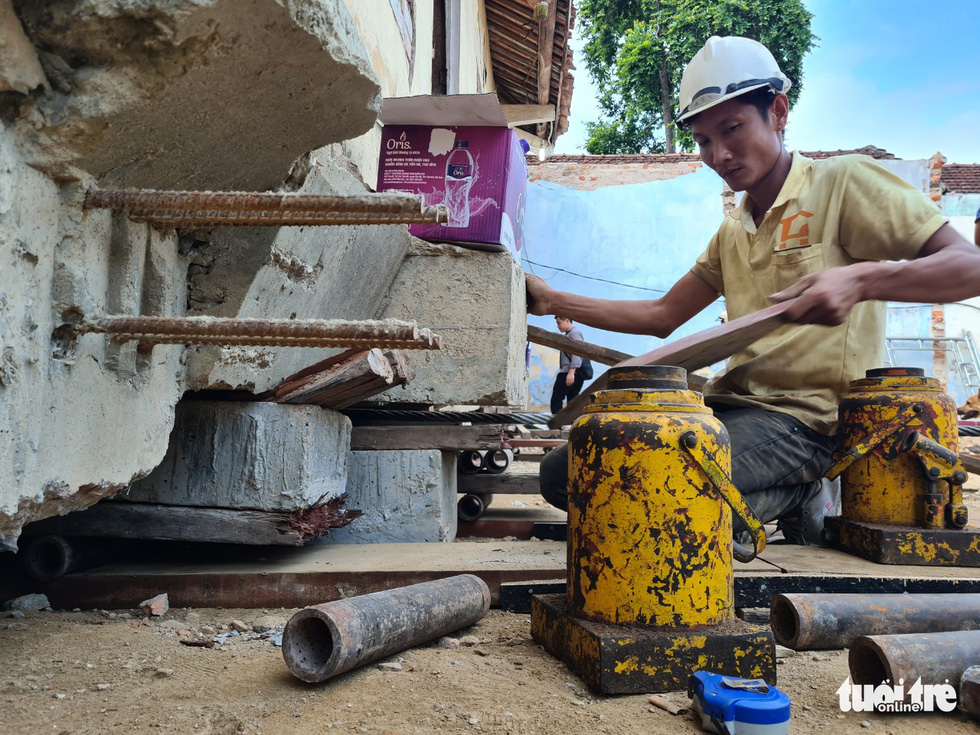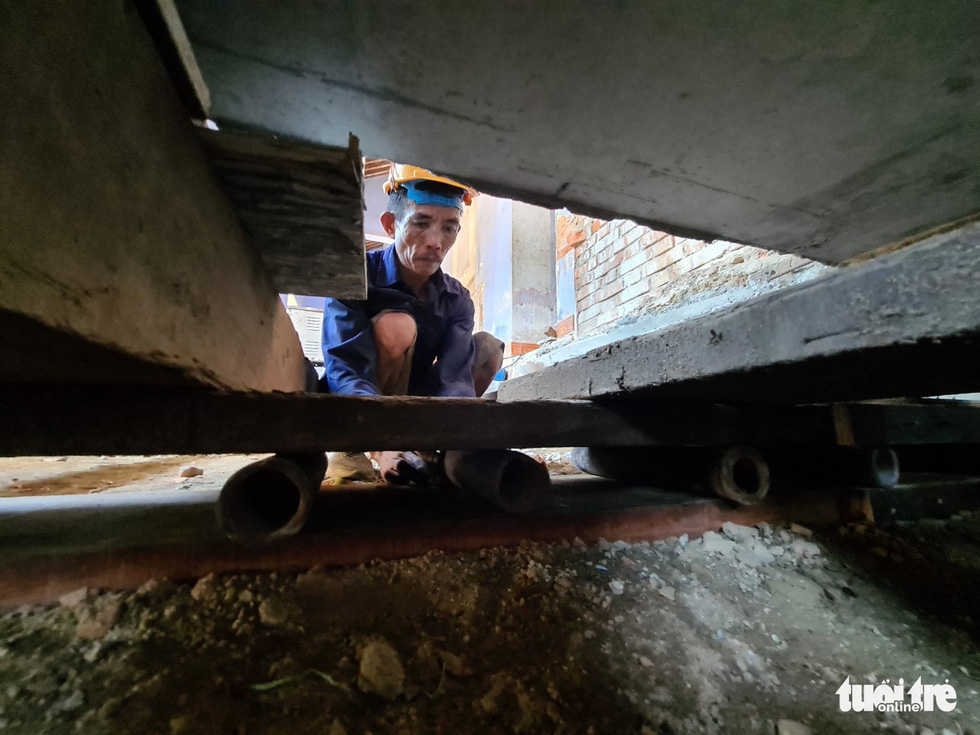Relocation guru Nguyen Van Cu, dubbed ‘a lamp genie’, and his 12-member team are relocating the main hall of Dieu De Pagoda in the central province of Thua Thien-Hue 18 meters backwards.
The job is aimed at preserving the ‘Long van khe hoi’, also known as ‘Cuu long an van’ (Nine dragons hidden in clouds) picture.
In the picture, five dragons hidden in clouds were painted on the ceiling of the main hall and four others on four pillars reaching up to the ceiling.
The relocation process includes many stages. Firstly, workers dug deeply into the foundation of the Dai Hung hall and constructed a plinth beam.
They later used a hydraulic cylinder system to lift the entire structure of the main hall by some 20 centimeters.
 |
| A hydraulic winch which is used to pull the main hall. Photo: Nhat Linh / Tuoi Tre |
The hall was put on wooden bars, which are placed on rollers.
Some other wooden bars are kept fixed on the ground by nails.
In addition, two large pulling machines and four hydraulic winches are connected to the main hall by large cables.
The system helps pull the main hall backwards.
According to Cu, director of Nguyen Van Cu subsidence and leaning handling company in Ho Chi Minh City, the main hall, weighing some 1,000 metric tons, is pulled by some four meters per day.
“The most difficult job is to preserve the ‘Long van khe hoi’ picture, also the ceiling of the main hall, and three Buddha altars during the relocation.
“We have weighed carefully and arrived at the safest relocation solution,” Cu noted.
 |
| Wooden bars are put under the main hall. Photo: Nhat Linh / Tuoi Tre |
Venerable Thich Hai Duc from Dieu De Pagoda said the pagoda invited Nguyen Van Cu to relocate the main hall of the pagoda after the authorities of Thua Thien-Hue Province asked Cu to survey and come up with a plan to relocate a French-style mansion at 26 Le Loi Street in Hue City.
In 2018, due to the serious deterioration of the Dai Hung main hall of Dieu De Pagoda, many agencies considered lowering the ceiling of the hall and sending it to the pagoda’s museum for preservation.
However, after fielding opinions, the pagoda decided to abandon this plan.
The ‘Long van khe hoi’ picture is more than 10 meters long and nearly 11 meters wide.
 |
| A hydraulic cylinder system is used to elevate the hall. Photo: Nhat Linh / Tuoi Tre |
The Vietnam Guinness Book of Records in March 2008 recognized the picture as the most ancient and biggest ceiling mural in Vietnam.
The picture is believed to be drawn by artist Phan Van Tanh in 1953.
However, no document proves the information, according to experts.
Tanh is also the painter of the ‘Long van khe hoi’ picture on the ceiling of the Tomb of Emperor Khai Dinh in Thua Thien-Hue Province.
 |
| Relocation guru Nguyen Van Cu directs the relocation. Photo: Nhat Linh / Tuoi Tre |
 |
| Workers put rollers between every two wooden bars to relocate the main hall. Photo: Nhat Linh / Tuoi Tre |
Like us on Facebook or follow us on Twitter to get the latest news about Vietnam!



















































